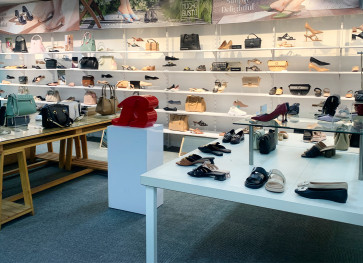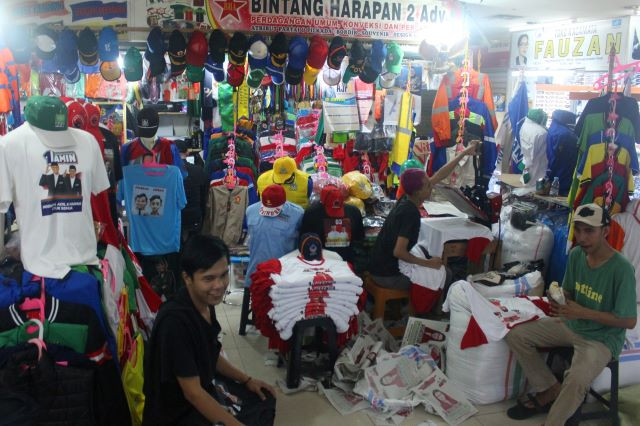How bike sharing could become mainstream
Todayâs traffic-choked city streets are a major contributor to the blight on public health that is air pollution
Change Size

T
oday's traffic-choked city streets are a major contributor to the blight on public health that is air pollution. Research suggests that auto emissions comprise an estimated 45 percent of urban air pollution in Europe, a figure that rises to as much as 80 percent in some Asian cities. In an attempt to encourage a cleaner commute, major cities from Shanghai to Chicago have recently introduced bike-sharing systems, whereby commuters can cheaply rent public bikes to travel between curbside docking stations.
Bike-sharing is not a new concept ' in fact, it dates back to the 1950s ' but it has resonated with contemporary eco-conscious urbanites. Still, at this early stage participation has been underwhelming in many cities. Some bike-sharing systems have reached financial self-sustainability ' but the goal of revolutionizing the commute by getting cars off the road remains far off. Meanwhile, most analysis of bike-sharing has focused on aspects of the technology and equipment rather than how to design such a system to maximize ridership. Our recent working paper Bike-Share Systems: Accessibility and Availability investigates this neglected topic.
Snapshots of the system
Paris is home to one of the worlds most successful bike-sharing programs. The Vélib system has the most bikes per capita (about 17,000) of any major city and facilitated nearly 173 million rides in the six years following its launch in July 2007. Vélibs mobile app gives users a real-time picture of bike availability across the systems more than 1,200 stations. Using this technology, we were able to take snapshots of activity in the 10 central districts of Paris (arrondissements 1-10) at two-minute intervals during the peak summer months of 2013. All told, our research incorporated 22 million snapshots of 349 bike stations.
Accessibility vs. availability
Our data enabled us to place accessibility (the number of stations located in a given area) and availability (the number of usable bikes at each station) in direct juxtaposition. When a particular station ran out of bikes, we could measure how ridership was affected by simply observing whether, and by how much, usage increased at neighboring stations. We found that the attraction of bike-sharing is highly local.
If the next station was more than a few blocks away, people couldn't be bothered walking there and chose to get to their destination some way other than biking. Remember that we conducted the study during summer, when weather would be most favorable for walking. The median system user was willing to walk only 150 meters (about two blocks) to the next station.
Of course, some would walk more, but in general more and more demand diffused out of the system the farther apart stations were spaced beyond the 150-meter mark. The Vélib system is extremely vulnerable to this effect, as it turns outwe saw that 95 percent of a given stations demand was lost when it ran out of bikes.
Our mathematical model, created from the Vélib dataset, shows the tangible benefits of increasing either accessibility or availability. We posit that increasing the bike-availability of all stations by 10 percent would increase system-use by 11.73 percent, while reducing the distance between stations by 100 meters would boost ridership by 37.57 percent.
As stated above, Vélib is upheld as a model for other bike-sharing programs in major cities to follow. Even so, we found its accessibility/availability tradeoff is not all it could be. Without adding a single new bike or docking point to the system, Vélib could recapture much of its diffused demand by splitting existing stations into two smaller ones placed close together, effectively knitting a tighter net to retain its customers.
Higher station density would, in this scenario, necessarily reduce bike availability, but there would be net ridership gain as commuters would be more likely to walk to more than one station (because the stations would be within 150 meters of each other) before giving up. In this way, our model demonstrates that Vélib could increase ridership by as much as 29.41 percent, or 268,440 rides per month, before low availability would begin to compromise the system.
Public policy implications
The obvious takeaway from our research is that cities should not bow to political demands to maximise coverage at the expense of density. Sprinkling a low number of stations over a wide area is likely to lead to less participation, not more. It would be wiser to concentrate solely on blanketing the most traffic-congested urban areas with docking stations.
Bike-sharing should also be viewed as part of a public transport ecosystem. For example, our data shows that Vélibs peak hours are approximately 9 p.m. - 2a.m., when the Metro is slow to inactive. Cities with a bustling CBD (central business district) surrounded by more sparsely populated areas can use bike-sharing as a relatively inexpensive feeder to fill in transport gaps. Many commuters would be only too happy to dispense with the cost and inconvenience of driving to and from work. All they need is a bike ready and waiting to carry them that last mile.
___________________________________
The writer is an associate professor of Technology and Operations Management at INSEAD









